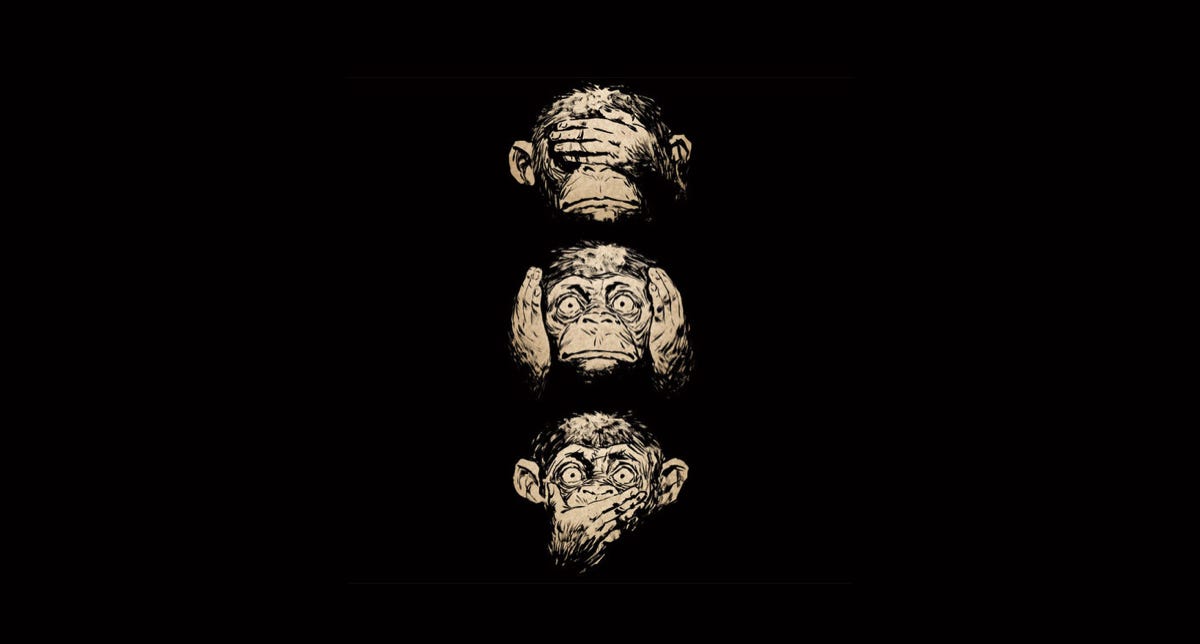
“Some of us think holding on makes us strong; but sometimes it is letting go.” — Hermann Hesse
It is said to trap a monkey, certain indigenous tribes. would employ the following technique. They would hollow out coconut (or similar vessel) and put some fruit inside as bait. Next, it is placed on a tree that monkeys frequent. In time, the monkey puts his hand in the coconut to grab the fruit, however, when he makes a fist to grab the bait, he is trapped, his fist will no longer fit through the hole in the coconut. To evade his approaching captors, all the monkey needs to do is let go of the bait, but instead, he continues to holds on and suffers a fate worse than letting go. All the monkey had to do was let go of the bait and he could go free, but he was simply not willing to let go!
How many of us hold on with clenched fists to the past, clutching to mental models of how things used to be, how we used to be? We dwell on the past, forgetting about the present, let alone the future. As individuals, we do this all the time, defining ourselves by the experiences of our past, rather than creating new possibilities by having visions for the future.
Organisations are but a mass of individuals working together towards a common goal or purpose. Because organisations are a collection of people, the organisation can also hold on to “the good old days”, “the way things are done around here” or dying or already obsolete business models.
When executives climb to the top of the corporate ladder, the status quo can suit them. Many executives worked damn hard to get to where they are and as a result, will fight tooth and nail to protect their status. Alas, ensuring things stay the way that suits us individually is often not in the best interest of the organisation.
“The Phoenix Must Burn to Emerge.” — Janet Fitch
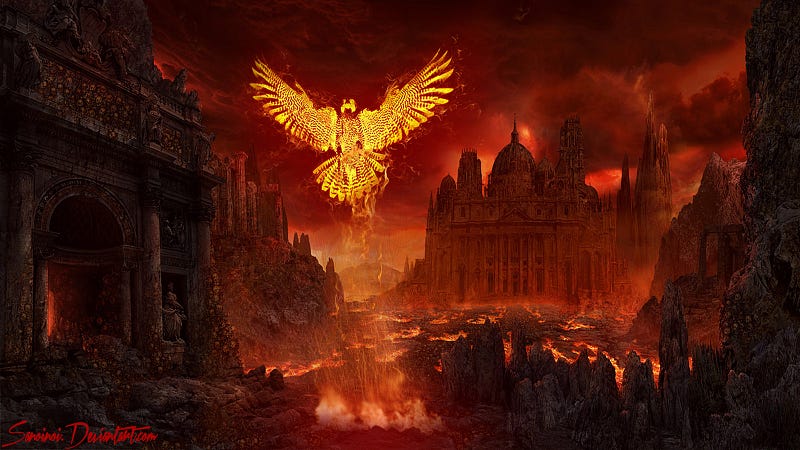
In Greek mythology, the Phoenix is a mythical creature that lives for 500 years before obtaining new life by arising from the ashes of its predecessor. The Phoenix is a symbol of the cyclical nature of life and of all energy. One of the oft-overlooked aspects of the Phoenix is that it does not discard the entirety of its former incarnation, it keeps the best bits, which make the next incarnation even stronger.
In life, we must continually evolve, heeding our experiences often learned the hard way through struggle and through failure. We develop wisdom this way, through the lessons we learn from our experiences, the good, the bad and the ugly.
Holding on to your former self, whether that be your position or a defunct business model is a road to misery. Businesses do this all the time, they hold on to the way things were always done because it is familiar, because it feels safe, even when they know deep down it is wrong. The Phoenix must first burn to emerge, but for that to happen the Phoenix must willingly enter the flames. If the Phoenix were to resist change and avoid the flames, the Phoenix will die. Innovation workers, digital changemakers and strategic consultants witness organisational resistance all the time, they behave like reluctant Phoenix unwilling to burn up the old to enable the new.
Accepting New Paradigms
“The leaders of the old paradigm have difficulty in embracing the new.” – Don Tapscott
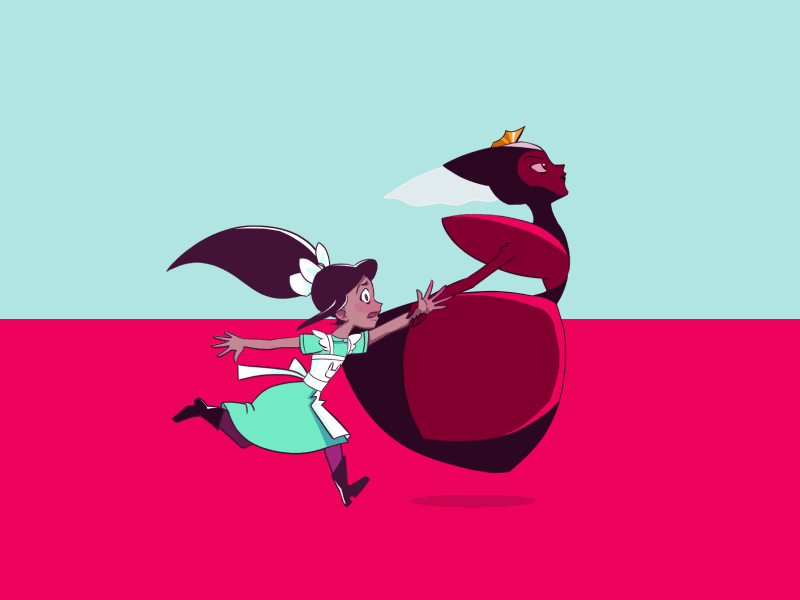
The Red Queen is a fictional character in Lewis Carroll’s Through the Looking-Glass.
In the novel, there is an event called “The Red Queen’s race” which involves the Red Queen and Alice constantly running but remaining in the same spot.
The Red Queen effect is a term coined by evolutionary biologist Leigh Van Valen as a hypothesis which proposes that organisms must constantly adapt and evolve to survive while pitted against ever-evolving opposing organisms in a constantly changing environment.
Our previous guest on the innovation show Ralph Welborn PhD, uses the term “Red Queen’s Race” to explain the extremely common reaction to transformation by many business leaders, which is running faster and faster with business models which are no longer relevant. In business, as in life, it is always easier to be executing a strategy rather than questioning the strategy in the first place — even when we know it is wrong.
To explore this concept further, consider the sigmoid curve or “S curve”, which can be used to map the evolution of any business, product, service (and even career).
S curves follow the shape of the letter S with a shallow (slow) start with early adopters and niche clientele. Rapid growth and refinement come next, followed by a dominant position in the market.
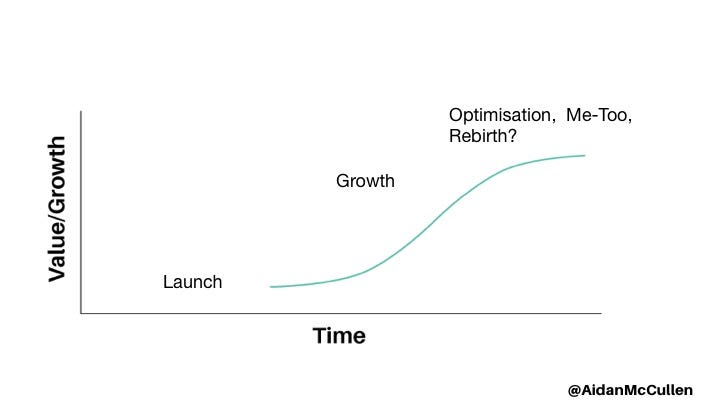
All business, products and services (and life) have a natural decay rate. When businesses fail to innovate and iterate, they eventually experience stagnation. Many businesses then turn to process optimisation, digitisation, automation and job cuts.
Rather than innovate, it is easier to optimise, optimisation does not require change, it requires linear improvement, we can handle that. The uncomfortable truth is that change means pain, discomfort and serious effort. To truly innovate means jumping the S curve to a new one, one that often feels like you are starting all over again.
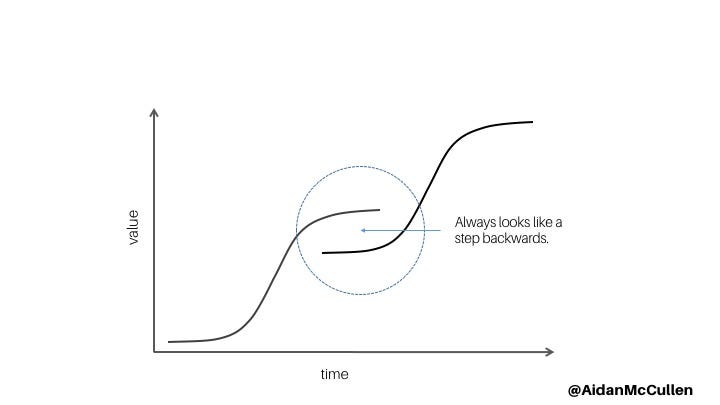
This is where we must heed the lessons of both the Phoenix and the monkey trap. If we hold on too tightly to our former incarnation, to what got us to where we are, we cannot burn up our business models, nor mindsets to become a better version of ourselves, to get us to where we need to be.
Everything has a life cycle, everything has a decay rate and everything needs to continually regenerate, but the first step in any new creation is destruction and therein lies the challenge.
“Every act of creation is first an act of destruction.” — Pablo Picasso
THANK YOU FOR READING
EP 140: How to beat your Brain with Exercise, Diet and Healthy Habits, Sugar Cravings and Workplace Stress with Matt Lovell
Matt Lovell is an expert in corporate wellness, he is a Performance and Health Nutritionist and Body recomposition expert and he develops top health and nutrition products via his site aminoman.com. His clients include England Rugby, Tottenham Hotspur, Man City and currently Reading and Bournemouth football clubs.
We talk:
How the brain always wins with habit changes
Easing out of old dietary and training habits
Sugar Cravings
Small dietary changes
Short 15 minute workouts
Workplace and Life Stress
Chronic stress and obesity
Cushing’s Disease
Amygdala Hijacks
Vision Setting
Have a listen:
Soundcloud https://lnkd.in/gBbTTuF
Spotify http://spoti.fi/2rXnAF4
iTunes https://apple.co/2gFvFbO
More about Matt here: https://aminoman.com/